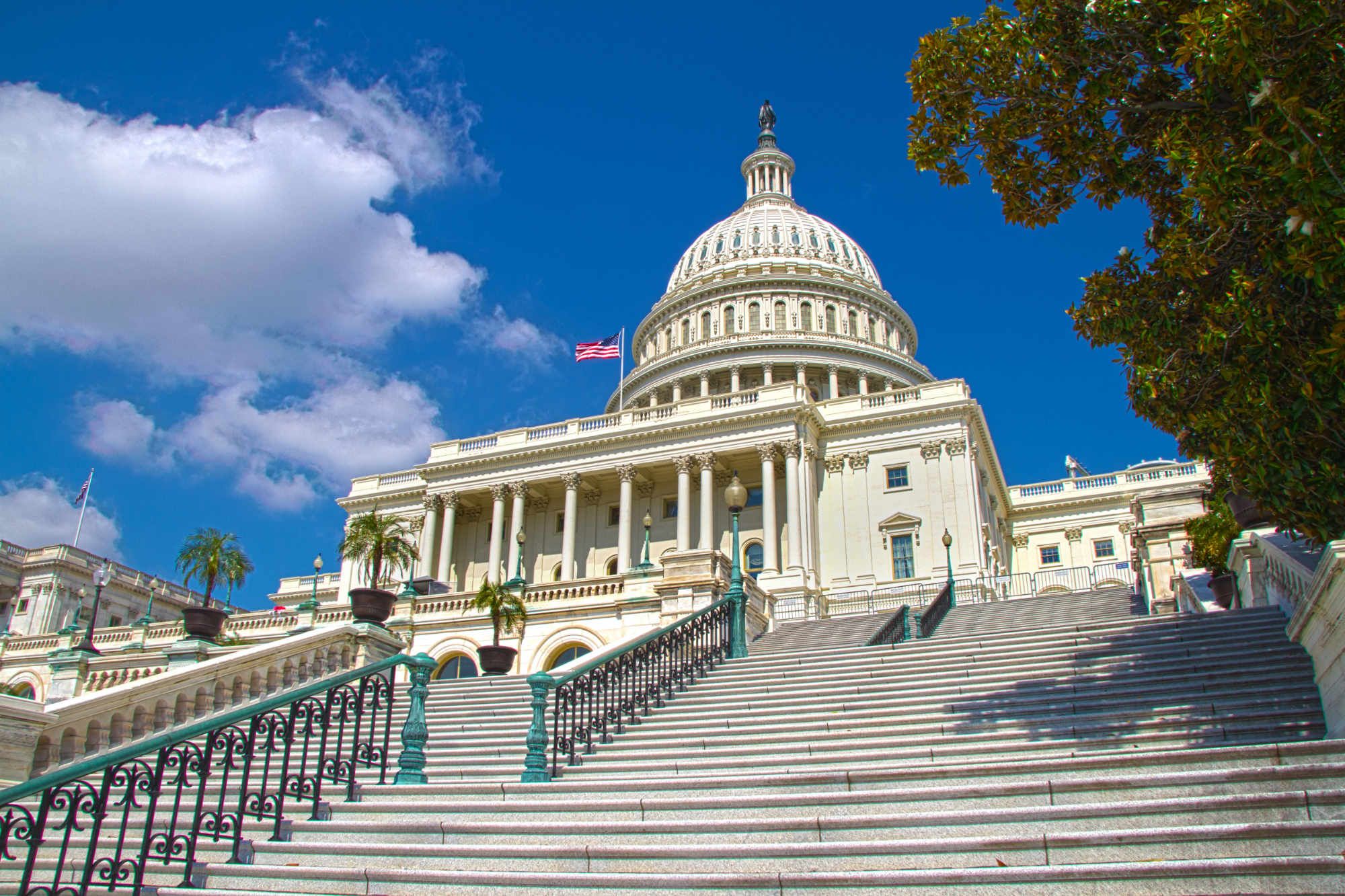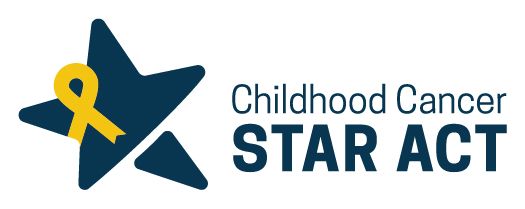Advancing Drug Development for Childhood Cancer: Policy Principles to Optimize the Pediatric Drug Laws
REPORT OF THE BPCA/PREA WORKING GROUP
Introduction
In 2014 and 2015, the Alliance for Childhood Cancer—a coalition of 29 national patient advocacy groups and professional medical and scientific organizations working to promote policies to improve the diagnosis, treatment, and survivorship care for children and adolescents with cancer— joined other childhood cancer advocacy organizations in a strategic planning process. This planning process, termed the “Childhood Cancer Policy Roundtable,” was developed to determine consensus views on policy advocacy priorities for childhood cancer.
One of three subgroups created in the roundtable process focused on “Accelerating Development and Availability of Promising Treatments.” This subgroup discussed a number of issues, including the Food and Drug Administration (FDA) pediatric drug laws. One outcome of this subgroup was the creation of a new working group to focus solely on making recommendations on possible modifications to the Best Pharmaceuticals for Children Act (BPCA) and the Pediatric Research Equity Act (PREA) to be more effective in the development of new therapies for pediatric cancer. This report details how these laws impact pediatric oncology and outlines recommended policy changes related to BPCA and PREA for consideration by Congress. This report is not meant to address the entire regulatory landscape relevant to pediatric cancer drug development and therefore does not consider policy changes outside of the context of BPCA and PREA.
BPCA/PREA Working Group Process
Working Group Membership
Participation in the working group was open to all interested members of the Alliance for Childhood Cancer and was also open to other groups, including members of the Coalition Against Childhood Cancer. The working group consists of the following individuals:
Susan Weiner, PhD (co-chair), Children’s Cause for Cancer Advocacy
James Baumberger, MPP (co-chair), American Academy of Pediatrics
Karla Flook, Colorado Kids Cancer Association
Donna Ludwinski, Solving Kids’ Cancer
David Arons, JD, National Brain Tumor Society
Danielle Leach, MPA, St. Baldrick’s Foundation
Michael Link, MD, Stanford University School of Medicine
Mark Fleury, PhD, American Cancer Society Cancer Action Network
Working Group Process
In 2015, the BPCA/PREA working group conducted a series of listening sessions with relevant stakeholders including leaders from FDA, academia, pharmaceutical companies, and pharmaceutical trade groups. Stakeholders were invited to share their thoughts on the future of pediatric cancer drug development and possible changes to FDA policy. The working group used these stakeholder meetings to further its dialogue and refine potential recommendations.
Background and Analysis
The pharmaceutical industry is market-driven and as such, there is more incentive to develop drugs for certain diseases than others. Childhood cancer provides little market incentive for the pharmaceutical industry to develop pediatric oncology drugs because the population of those impacted is comparatively small. Therefore, children with cancer are currently treated with drugs that were developed several decades ago for adults and not with the unique needs of children in mind. Research documents that children treated with these agents suffer many health and psychosocial late effects. Childhood cancer remains the leading cause of disease-related death in U.S. children despite advances in survival rates for some types of childhood cancer.
BPCA and PREA were developed to increase the number of drugs that, while developed for adults, would also be evaluated in children. These laws recognize that the many physiological differences between children and adults— such as size, metabolism, disease manifestation, and disease progression—impact how and whether adult therapies work when given to children, necessitating independent evaluation of therapies specifically in the pediatric population. BPCA and PREA were permanently reauthorized by Congress in 2012 in the Food and Drug Administration Safety and Innovation Act (FDASIA).1 While BPCA has had some success in generating studies in pediatric malignancies, PREA has had little impact on advancing therapies for children with cancer.
The Best Pharmaceuticals for Children Act2 (BPCA), originally established in 1997, provides pharmaceutical companies an incentive of six additional months of marketing exclusivity for a drug if they voluntarily conduct FDArequested pediatric studies on that drug. FDA requests pediatric studies of a drug sponsor in the form of a letter known as a “written request,” which the sponsor can accept or decline. While sponsors can ask for a written request by submitting a “proposed pediatric study request” (PPSR), FDA has sole discretion in determining whether and when a written request is issued. It may be issued before or after a drug receives marketing approval for adults, and it may include requests for studies in pediatric diseases or conditions that are not related to the approved indication for adults.
As of March 2015, FDA had issued a total of 464 written requests for BPCA studies and 59 (approximately 13%) of them had been for oncology products.3 However, since BPCA studies may generally be conducted at any time prior to the expiration of a drug’s marketing exclusivity—and because the exclusivity extension incentive is realized at the end of a drug’s marketing exclusivity—BPCA studies are often not completed until many years after the approval of the adult indication.
BPCA created and permanently authorized the Pediatric Oncology Subcommittee of the Oncologic Drugs Advisory Committee (PedsODAC).4 The mission of PedsODAC is to advise FDA on the application of BPCA and PREA to pediatric cancer drugs, including giving guidance on whether and how a particular drug should be studied in children. BPCA also created a program at the National Institutes of Health to study drugs in children not otherwise studied by BPCA and PREA. While funding for this program is limited, it has or is planning to fund pediatric cancer studies on vincristine, actinomycin-D, methotrexate, daunomycin, and isotretinoin.
The Pediatric Research Equity Act5 (PREA), first enacted by Congress in 2003, is a pre-market requirement that drug sponsors conduct pediatric assessments on drugs developed for adults that are the subject of any application for a new active ingredient, new indication, new dosage form, new dosing regimen, or new route of administration. FDA has the authority to require studies under PREA in children only for the “claimed indications” in adults. Therefore, if the adult indication is not relevant in children, FDA will waive the PREA requirement for that drug. An equally significant limitation of PREA is that all drugs for orphan indications are exempt from pediatric study requirements. Virtually all cancers that occur in children are orphan diseases; therefore FDA cannot generally require pediatric studies of oncology agents. When studies are required, the drug sponsor must submit a pediatric study plan (PSP) to FDA detailing its plan to fulfill its PREA requirements no later than the end of phase II of the development process. Completed studies are due at the time of submission of an application unless FDA defers the requirement to a later date.
BPCA and PREA have yielded important treatment information for many children’s diseases. However, while BPCA has had a somewhat positive but modest impact on childhood cancer research, PREA has had virtually no impact on pediatric studies of adult cancer drugs, since adult cancers are excluded from requirements either due to orphan status or are indications that are determined to be irrelevant to children. Further, recent findings in cancer biology indicate that new oncology agents are now being approved on the basis of their genomic and molecular action on a tumor rather than solely on the location of the cancer site or its general type. As evidence for PREA’s lack of effect on pediatric oncology studies, recent data show that of the 57 cancer therapeutics approved by FDA since 2009, 40 of those drugs were classified as orphan drugs and were therefore exempt from PREA. The remaining 17 drugs received PREA waivers because the adult indication was determined to be not relevant to pediatrics. In sum, none of the last 57 cancer drugs approved by FDA were required to conduct studies in children.6
Although almost all approved oncology drugs were developed for various adult indications, leading pediatric cancer researchers agree that these therapies have promise in treating pediatric cancers. Pediatric and adult cancers in some cases share the same genetic and molecular dysfunctions. There is particular promise when the action of an agent on a molecular pathway in an adult cancer is deemed similar to that occurring in a childhood malignancy regardless of the adult indication. However, if the adult indication is irrelevant in children, PREA cannot be used to require pediatric studies of that drug even though the molecular pathway may be similar or identical. This renders PREA inadequate for our most up-to-date understanding of cancer biology, which in turn leads to lost or delayed opportunities to study promising cancer drugs in children.
The Alliance for Childhood Cancer initially advocated to amend PREA to make it more relevant to pediatric cancer in 2011 and 2012 as Congress was considering the most recent reauthorization of the FDA user fee laws. However, proposed amendments to PREA were ultimately not made in that legislation. Since that time, there has been an emerging consensus that changes to PREA are necessary. In 2015, FDA leaders—including Janet Woodcock, MD, director of the Center for Drug Evaluation and Research, and Richard Pazdur, director of the Office of Oncology Drug Products—signaled their support for considering changes to how PREA relates to pediatric cancer.7 Also in 2015, the Europeans Medicines Agency (EMA), which has similar incentives and requirements for the study of drugs in children, announced it was revoking 8 blanket or “class” waivers and revising 15 others. Several of these changes will allow EMA to more easily require pediatric studies of drugs developed for adult cancers.8 Greater consistency between EMA and FDA policy will permit better collaboration—as in the case of osteosarcoma— between U.S. and European researchers, which in turn will lead to faster discoveries. In addition, some drug companies have been moving to oncology drug development models that are based on an agent’s mechanism of action rather than on a specific indication.
In lieu of continuing requirements that the Government Accountability Office evaluate BPCA and PREA periodically, Sec. 508 of FDASIA created a process whereby FDA must seek stakeholder input, evaluate, and report on BPCA and PREA every five years, aligned with the reauthorization of the FDA user fee programs. This report must include a specific evaluation of the programs with regard to pediatric cancer. The first such report is due to Congress in July 2016. It is expected that in this report FDA will outline its vision for reforms to PREA to ensure its relevance to pediatric cancer. In March 2015, FDA conducted a public meeting to satisfy the stakeholder input requirement on the report. The meeting featured many speakers who addressed the limitations of BPCA and PREA as it relates to pediatric labeling for oncology products.
Policy Recommendations
Pediatric Research Equity Act
Recommendation 1: Make PREA Relevant to Targeted Therapies
Currently under PREA, FDA can only require a company to conduct pediatric studies for a new agent if the indication is the same in adults as in children. This severely limits the ability of FDA to require pediatric studies of new cancer products. To expand children with cancer’s access to modern therapeutic agents, we suggest expanding FDA’s authority to require pediatric studies for new agents in development for adults under certain conditions when the indication is not the same in adults and children.
We support changing the statutory language of PREA to give FDA the authority to require pediatric studies of an adult drug when a drug affects specific molecular targets or molecular mechanisms that are shared between the adult and pediatric disease. For oncology products, a PREA requirement could be triggered if an adult cancer agent would have certain common effects on a pediatric cancer, for instance, if the drug targets, inhibits, or suppresses a cell surface receptor or cell signaling pathway responsible for causing the progression of a pediatric cancer.
The PedsODAC should play an important role in advising FDA on the appropriate implementation of such a change for oncology products by providing guidance to the agency on the appropriate instances to require pediatric studies of drugs under this authority. There are limited numbers of children with cancer available for participation in clinical trials and as such, FDA—with guidance from outside experts—must carefully prioritize the drugs that should be moved forward to pediatric trials.
Recommendation 2: Remove the PREA Orphan Drug Exclusion
Under current statute, drugs classified as orphan drugs because they target rare diseases—defined as affecting fewer than 200,000 individuals in the United States—are exempt from the PREA requirement. The vast majority of cancer drugs developed today qualify as orphan drugs. There has been recent rapid growth in the number of drugs that have received orphan status. In just the last five years, 61 orphan drugs were launched, compared with 31 total from 2005 to 2009.9 We therefore support removing the statutory prohibition on the use of PREA for orphan diseases, otherwise known as the orphan drug exclusion. We would expect that FDA would continue to grant waivers and deferrals of pediatric studies for these orphan drugs, as appropriate, as is required under PREA when pediatric studies are impossible or highly impracticable (such as when there are not enough patients for a study) or need additional time upon approval of the drug in adults. Removing the rare disease exclusion would ensure that PREA can be an effective tool to require the study of drugs for pediatric malignancies given the modern understanding of cancer biology and therapeutics.
Recommendation 3: Encourage Earlier Pediatric Discussion of PREA for Drugs for Serious and Life-Threatening Conditions
Under current law, sponsors are required to submit a pediatric study plan (PSP) no later than the end of the phase II in the drug development process for adults. Particularly for drugs for serious and life-threatening diseases like pediatric cancer, starting these discussions earlier could lead to earlier initiation of studies in children when appropriate. FDA should be empowered to require pediatric discussions with sponsors as soon as possible for serious and life-threatening diseases in children if FDA determines that encouraging earlier pediatric studies would be beneficial to children. If appropriate, these PREA discussions should occur in conjunction with discussions on possible BPCA studies (see Recommendation 4). Implementing this recommendation would require the adoption of Recommendation 1 and Recommendation 2.
Best Pharmaceuticals for Children Act
Pediatric studies incentivized by BPCA are often not completed until late in the life-cycle of a drug, potentially delaying important information about a drug’s effectiveness for pediatric cancer. A multi-faceted strategy to speed the completion of BPCA is needed.
An important part of this strategy would include FDA issuing written requests earlier in the development of adult oncology agents. BPCA could prove to be a more effective incentive for studying oncology agents in children if FDA issued written requests as soon as the similarities of molecular mechanisms of action in adult and pediatric tumors were established, regardless of the stage of development of an adult oncology agent. This strategy could increase companies’ willingness to initiate early phase childhood cancer clinical trials well prior to receiving FDA approval for an adult indication, enabling the incentive to be earned as soon as possible after the adult approval.
Recommendation 4: Encourage Earlier Pediatric Discussion of BPCA for Drugs for Serious and Life-Threatening Conditions and Issue Written Requests Earlier
Current law requires discussions between FDA and drug sponsors about pediatric development under PREA to start no later than the end of phase II in the adult drug development process. Discussion regarding BPCA may start at any time but is not required to start prior to the adult approval of the drug. Particularly for drugs for serious and life-threatening diseases like pediatric cancer, starting these discussions earlier could lead to earlier issuance of written requests and earlier initiation of studies in children when appropriate. FDA should be empowered to initiate pediatric discussions with sponsors as soon as possible for serious and life-threatening diseases in children if FDA determines that encouraging earlier pediatric studies would be beneficial to children. FDA should also take steps, when appropriate, to issue written requests for drugs for serious and life-threatening conditions earlier.
Recommendation 5: Develop a Plan to Achieve Earlier Submission of BPCA Studies
By law, written requests must include a timeframe for the completion of the pediatric studies and exclusivity is only to be granted if studies are completed within that timeframe. FDA should be required to develop a plan to use this authority to achieve earlier submission of completed BPCA studies. In executing such a plan, FDA should be sensitive to maintaining the attractiveness of the incentive and accommodate—through amendments to written requests—reasonable and unavoidable delays in the completion of pediatric studies for reasons, such as legitimate difficulty in recruiting adequate sample sizes for studies.
Recommendation 6: Improve the Transparency of BPCA Activities in Progress
Currently, researchers and the public have no information about the status of ongoing BPCA studies. The only information that FDA currently makes public about BPCA studies before they are completed and exclusivity is awarded is whether or not a written request was issued for a certain product. FDA does not publish information about when written requests are issued, whether or not a sponsor has accepted or denied a request, what studies FDA has requested and for what conditions, and the timeline for completing the studies. At a minimum, the public should be made aware of the expected timeline for completion of studies. Greater transparency about the operation of the program and a greater ability to monitor the speed of study initiation and completion will help improve collaboration and coordination between industry, researchers, and patients. Written requests should be made public upon agreement or denial of the written request by a pharmaceutical sponsor.
Ongoing Oversight
Recommendation 7: Conduct Continued Evaluation of BPCA and PREA for Pediatric Cancer
FDASIA requires FDA to evaluate and report on BPCA and PREA every five years. This report must by law address pediatric cancer and make “recommendations for modifications to [BPCA and PREA] that would lead to new and better therapies for children with cancer.” It is essential that FDA continuously monitor these programs to ensure their optimal impact in children with cancer and comprehensively evaluate their impact on pediatric oncology every five years. The language of the report requirement should be amended accordingly to require evaluation of any new changes to BPCA and PREA.
Under BPCA, companies can be awarded six months of marketing exclusivity for all uses of an agent if they conduct pediatric studies according to FDA’s specifications. Because genomic analyses of adult cancers are dividing traditional cancer types into multiple subtypes of disease, the economic value to companies of the six-month marketing exclusivity incentive may be smaller for smaller population sizes and may diminish over time. We support the continued evaluation of the six-month exclusivity incentive in order to ensure that it continues to be an effective incentive for companies to conduct pediatric oncology studies.
Finally, FDA must constantly evaluate new science in pediatric oncology and respond accordingly by revising guidance on completing cancer studies in children. This may include consideration of novel clinical trials designs and instances in which alternative methodologies, such as case-controlled studies, may be substituted for randomized controlled trials.
Endorsements
The recommendations in this report have been endorsed by the following organizations:
American Academy of Pediatrics
American Childhood Cancer Organization
American Society of Clinical Oncology
American Society of Pediatric Hematology/Oncology
Association of Pediatric Hematology-Oncology Nurses
Association of Pediatric Oncology Social Workers
B+ Foundation
Chai Lifeline
Children’s Brain Tumor Foundation
Children’s Cause for Cancer Advocacy
Children’s Oncology Group
CureSearch for Children’s Cancer
KOA Cares Camps
National Brain Tumor Society
National Children’s Cancer Society
Pediatric Brain Tumor Foundation
Rally Foundation for Childhood Cancer Research
Sarcoma Foundation of America
Society of Pediatric Psychology
St. Baldrick’s Foundation
----------------------------------------
1 Food and Drug Administration Safety and Innovation Act (Public Law 112-144).
2 Sec. 505A of the Federal Food, Drug, and Cosmetic Act [21 U.S.C. 355a].
3 FDA BPCA and PREA Stakeholder Input Public Meeting, March 25, 2015. Presentations of Lynne Yao, MD (http://www.fda.gov/downloads/NewsEvents/MeetingsConferencesWorkshops/UCM439629.pdf) and Gregory Reaman, MD (http://www.fda.gov/downloads/NewsEvents/MeetingsConferencesWorkshops/UCM439518.pdf).
4 Sec. 15 of the Best Pharmaceuticals for Children Act (Public Law 107-109), as amended by the Food and Drug Administration Amendments Act of 2007 (Public Law 110-85).
5 Sec. 505B of the Federal Food, Drug, and Cosmetic Act [21 U.S.C. 355c].
6 Analysis conducted by the American Cancer Society Cancer Action Network.
7 Janet Woodcock, MD, Testimony, House Committee on Energy and Commerce, April 30, 2015. Richard Pazdur, MD, interview, BioCentury TV, April 15, 2015.
8 European Medicines Agency. Stimulating the development of medicines for children. http://www.ema.europa.eu/docs/en_GB/document_library/Press_release/2015/07/WC500190382.pdf.
9 IMS Institute for Healthcare Informatics. Medicines Use and Spending Shifts: A Review of the Use of Medicines in the U.S. in 2014. April 2015.





